

Teachers Cheat Sheet for Evaluating Educational Apps. Digital Note Taking Strategies That Deepen Student Thinking. Why Your Students Should Blog: 6 Powerful Benefits. HyperDoc Templates. 5 Good Notable EdTech Tools for Teachers. 12 Digital Tools to Try in 2018. There are so many digital tools available today that offer opportunities for promoting student creativity, student voice, and expanding where and how students learn.
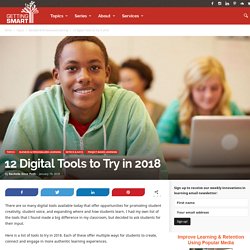
I had my own list of the tools that I found made a big difference in my classroom, but decided to ask students for their input. Chrome Extensions for EAL and Special Needs- and Everyone! Technology can be a powerful tool to assist students with special needs or any sort of learning challenge.
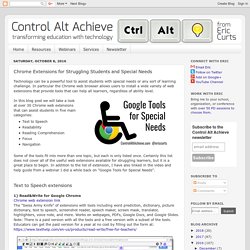
In particular the Chrome web browser allows users to install a wide variety of web extensions that provide tools that can help all learners, regardless of ability level. In this blog post we will take a look at over 30 Chrome web extensions that can assist students in five main categories:Text to SpeechReadabilityReading ComprehensionFocusNavigation Some of the tools fit into more than one topic, but each is only listed once. Certainly this list does not cover all of the useful web extensions available for struggling learners, but it is a great place to begin. Google Earth Across the Curriculum. Generation Global: How Cross-Cultural Dialogue Builds Critical Thinking and Empathy. The world and the people who work and live in it have become ever more connected as the internet becomes more accessible.
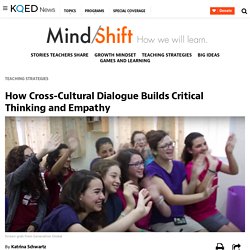
Yet despite the ability to connect and learn about happenings on the other side of the globe, many communities have become more polarized and entrenched in a particular worldview. As these trends emerge, teachers are looking for ways to foster productive dialogue skills in today’s students — the generation that will have to deal with complex, increasingly global problems. Activities that connect students to peers in other countries have become more common in classrooms because it’s now possible. Decades ago students might have had an international penpal, now they can easily have digital penpals or video conference with students all over the world. Teachers are using this new ability to connect to offer students of all ages authentic audiences to practice writing and language skills, but often the focus has been on younger children. GGPC Global Projects. Why Your Students Should Blog: 6 Powerful Benefits. Skype in the Classroom - Virtual Field Trips.
Technology Integration Matrix. Technology Integration Matrix. Curriculum – Applied Digital Skills from Google. Media & Information Literacy For Teachers (UNESCO) Stackup Online Reading. Hypothesis-annotate websites. Literacy in the Digital Age: Five Sites With High-Quality Informational Text. Editor’s Note: Teaching Channel has partnered with Student Achievement Partners on a blog series about digital literacy tools and their effective use by educators.

One of the most exciting shifts in the Common Core State Standards is the increased use of content-rich, informational text. Let’s think about this. As professionals, how often do we read texts that are outside of our comfort zone? Perhaps it was a legal document, a lengthy contract, or 16th Century prose. A lot of time, no doubt, was spent trying to decode the language used. 4 Good Websites That Provide Educational Documentaries. Looking for some good websites that provide curated educational documentaries?
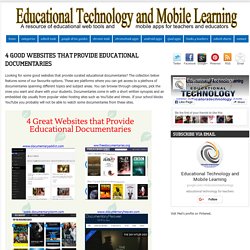
The collection below features some of our favourite options. These are platforms where you can get access to a plethora of documentaries spanning different topics and subject areas. You can browse through categories, pick the ones you want and share with your students. Newsmap: visual of top stories-sortable. How to Turn a Classroom Research Project into an Infographic. Conveying information in a striking, concise way has never been more important, and infographics are the perfect pedagogical tool with which to do so.
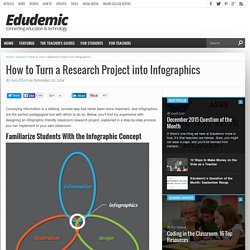
Below, you’ll find my experience with designing an infographic-friendly classroom research project, explained in a step-by-step process you can implement in your own classroom. Familiarize Students With the Infographic Concept Photo credit: visual.ly After hearing all the buzz about infographics in education, I thought I’d experiment with the concept in my seventh-grade accelerated English class. I wanted to ease my students into the idea, so we first spent time researching infographics — what they are, how they work, and what kind of information is best conveyed by the medium.
UDL Book Builder ™ Instagram for Teachers. If you already have a personal account and want to add another one to use professionally, go to your profile screen and click the Settings icon at the top right.
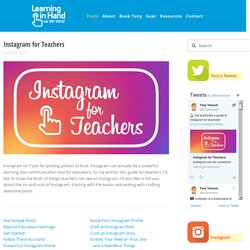
Scroll to the bottom and click Add Account. Go through the steps of signing up. Smithsonian Learning Lab. Exploring Essential Questions with a Group of Objects. By: Tess Porter, Educational Technician, Smithsonian Center for Learning and Digital Access Trying to brainstorm your next Learning Lab collection, but not sure where to start?
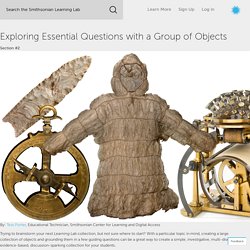
With a particular topic in mind, creating a large collection of objects and grounding them in a few guiding questions can be a great way to create a simple, investigative, multi-disciplinary, evidence-based, discussion-sparking collection for your students. This method is flexible, can be used with a wide variety of topics, and works best in a collection containing 20–50 objects. In this post, I'll describe some basic guidelines for creating a collection using this method, as well as examples of collections that I and other educators have built to inspire your own. Jeopardy game creator for teachers. Quia. How to Create a Jeopardy-style Game in Google Spreadsheets. Fantastic Comprehensive List of Assessment Tools for Teachers. About ETR Community.

YouTube Channel: CrashCourse educational videos. The best free cultural & educational media on the web - Open Culture. Educational NEoK12: Videos and Games for learning. Jane's Pick of the Day: 25 places to find instructional videos. OpenEd: Lesson Plans, Assessments, Videos, Games. Open Educational Resources (OER): Resource Roundup. Resources by Topic: OER, a part of the global open content movement, are shared teaching, learning, and research resources available under legally recognized open licenses -- free for people to reuse, revise, remix, and redistribute.
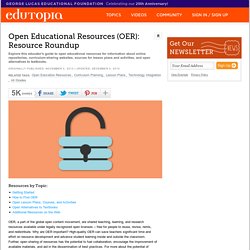
Why are OER important? High-quality OER can save teachers significant time and effort on resource development and advance student learning inside and outside the classroom. Further, open sharing of resources has the potential to fuel collaboration, encourage the improvement of available materials, and aid in the dissemination of best practices. For more about the potential of OER, check out "5-Minute Film Festival: Why Open Education Matters," by Edutopia's VideoAmy. Getting Started Sharing Resources. PowerMyLearning Educational Games & Learning Activities for Kids.
OER Commons. eChalk: Teaching resources for interactive whiteboards and data projectors. Hippocampus: Homework and Study Help. Khan Academy. LearnZillion. 8 High-Quality OER Collections. Resource Spotlight. Educade. PBS LearningMedia. Smithsonian Teaching Resources. TES resources: Find and sell teaching resources.